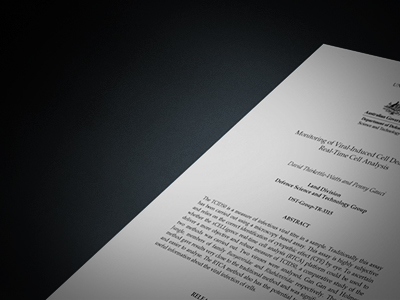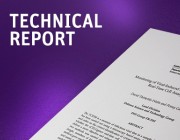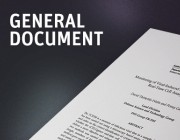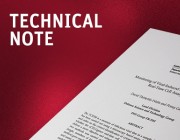Arbovirus is used to describe viruses transmitted via blood-feeding arthropods, such as mosquitoes, biting midges and ticks. This report focuses on characterisation of two unknown rhabdoviruses and describes a new method to prepare the virus samples for next-generation sequencing analysis.
Scientific publications

Our scientific output includes report literature
Our scientific and technical publications are an important vehicle for the dissemination of our work.
We have several goals for our publications:
- To communicate the results of the research program to clients and fulfil our reporting responsibilities to the Department of Defence.
- To record the results of our research program.
- To communicate the results of scientific research and technical information to Australian industry and academia.
- To increase awareness of and enhance the reputation of DSTG.
For enquiries about science and technical publications, or to request a publication please contact qfgt.erfrnepu.choyvpngvbaf@qrsrapr.tbi.nh
Latest scientific publications

Technical report
This report describes the characterisation of two unknown bunyaviruses, designated Maprik (MPKV) and Buffalo Creek (BCV), and two unknown rhabdoviruses, designated Harrison Dam (HARDV) and Holmes Jungle (HOJV), using techniques such as PCR-select subtraction and next-generation sequencing.

Technical report
This report outlines the development of an inverse-gated phosphorous nuclear magnetic resonance (NMR) spectroscopy method for determining the purity of chemical warfare agents using reference standards contained within a glass stem coaxial insert. The operational simplicity of this method enables both quantitative and qualitative information to be rapidly gleaned from a single sample.

Technical report
The modelling of solid propellant ignition is investigated with the aim of implementation into the numerical code Casbar.

Technical report
In this paper we analyse current PDF exploits and the future trends and the potential threat they pose.

General document
This overseas visit report provides an overview of ICCRTS 2011. Including the three primary research areas that emerged from the conference of agility and what that means for organisational structures; the concept of "Harmony of Purpose" 1; and the need to develop better approaches to discovery of second and tertiary effects to decision making, operational analysis and nation building.

Technical report
This report presents examples of components from ADF aircraft that exhibited surface pitting which formed during the anodising pre-treatment process. In three of the examples, fatigue cracking had initiated from the surface pits leading to failure of the components.

Technical note
Computational Red Teaming describes the application of new and innovative analytic techniques, tools and methodologies in support of Red Teaming Activities. This report documents the formal design of such a tool, to inform the future direction of the DSTO research program.

Technical report
A two-dimensional weight function approach is used to determine stress intensity factors for cracks in either tensile or compressive stress fields, due to one of three mechanisms: remote tension overload, remote compression overload or hole cold expansion.

Technical note
The work described in this paper applies a UPDM-based architecture development approach to capture capability development information with an emphasis on developing a fit-for-purpose visualisation to support decision-making.

